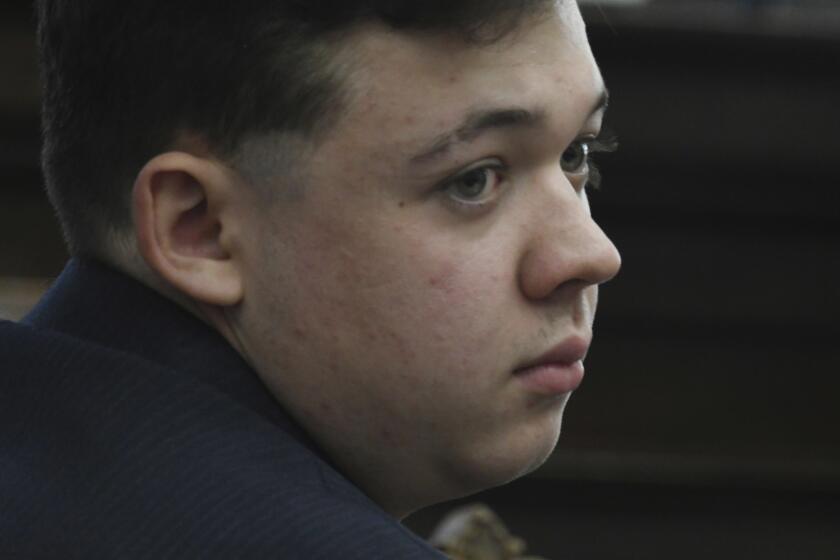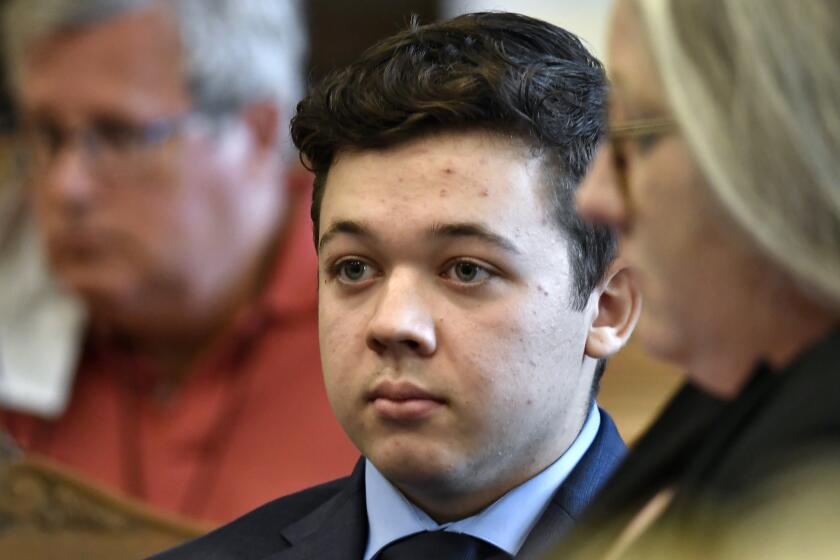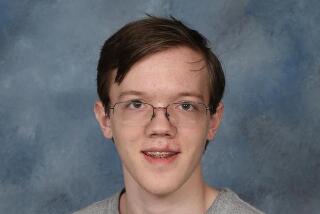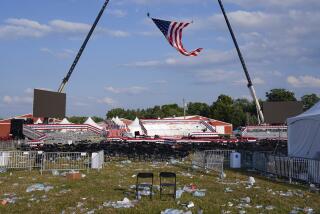Survivor says he was pointing his gun at Kyle Rittenhouse
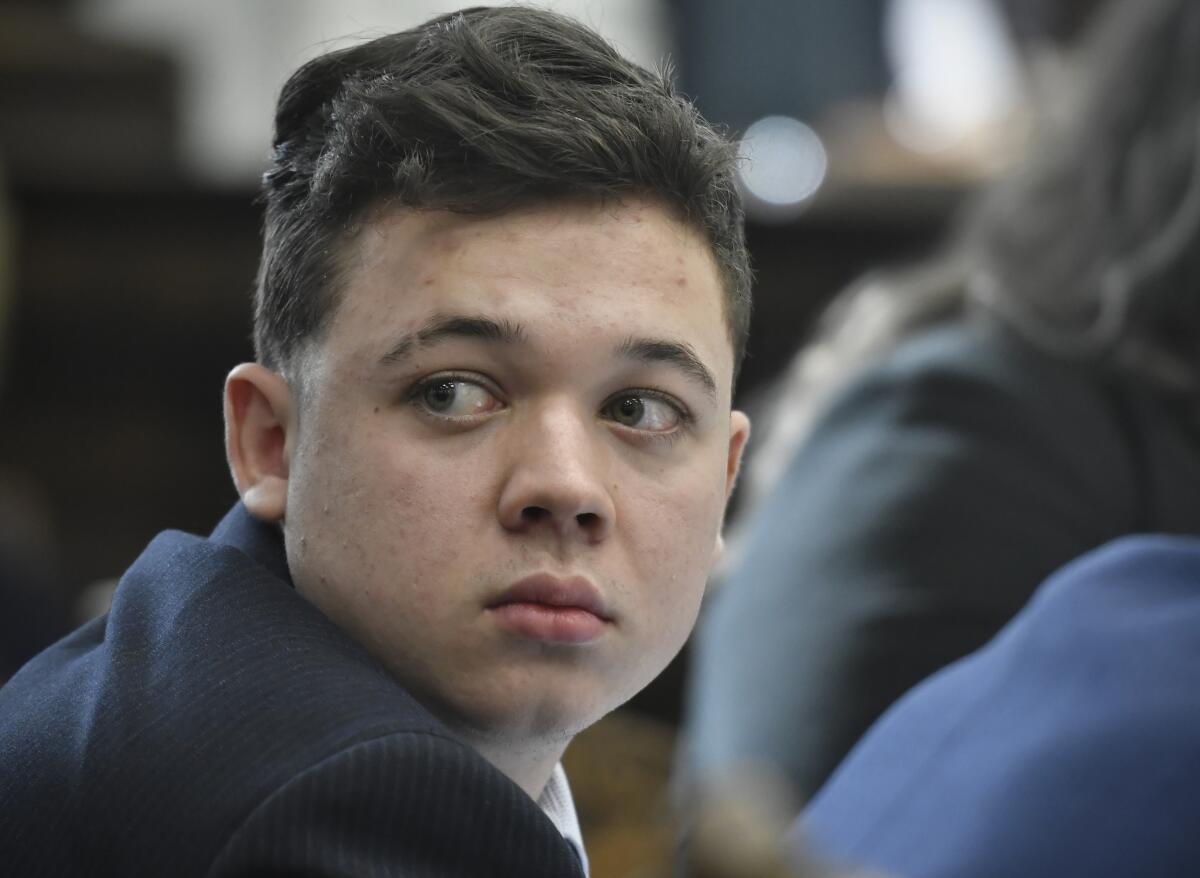
KENOSHA, Wis. â A protester and volunteer medic wounded on the streets of Kenosha by Kyle Rittenhouse testified Monday that he was pointing his own gun at the rifle-toting Rittenhouse â unintentionally, he said â when the young man shot him.
Gaige Grosskreutz, the third and final man shot by Rittenhouse during a night of turbulent racial-justice protests in the summer of 2020, took the stand at Rittenhouseâs murder trial and recounted how he drew his pistol after the bloodshed started.
âI thought the defendant was an active shooter,â the 27-year-old Grosskreutz said. Asked what was going through his mind as he got closer to the 17-year-old Rittenhouse, he said, âThat I was going to die.â
Rittenhouse shot Grosskreutz in the arm, tearing away much of his biceps â or âvaporizedâ it, as the witness put it.
Rittenhouse, now 18, is on trial on charges of killing two men and wounding Grosskreutz. The one-time police youth cadet from Antioch, Ill., had gone to Kenosha with an AR-style semiautomatic rifle and a medical kit in what he said was an effort to safeguard property from the violent demonstrations that broke out over the shooting of Jacob Blake, a Black man, by a white Kenosha police officer.
A prosecutor says Kyle Rittenhouse instigated the confrontation that led him to shoot three people on the streets of Kenosha, Wis.
Prosecutors have portrayed Rittenhouse as the instigator of the bloodshed. His lawyers have argued that he acted in self-defense. He could get life in prison if convicted of the most serious charges against him.
Under questioning from the prosecution, Grosskreutz said he had his hands raised as he closed in on Rittenhouse and didnât intend to shoot the young man. Prosecutor Thomas Binger asked Grosskreutz why he didnât shoot first.
âThatâs not the kind of person that I am. Thatâs not why I was out there,â he said. âItâs not who I am. And definitely not somebody I would want to become.â
But during cross-examination, Rittenhouse defense attorney Corey Chirafisi asked: âIt wasnât until you pointed your gun at him, advanced on him ⌠that he fired, right?â
âCorrect,â Grosskreutz replied. The defense also presented a photo showing Grosskreutz pointing the gun at Rittenhouse, who was on the ground with his rifle pointed up at Grosskreutz.
Grosskreutz, under follow-up questioning from the prosecutor, said he did not intend to point his weapon at Rittenhouse.
Wisconsinâs self-defense law allows someone to use deadly force only if ânecessary to prevent imminent death or great bodily harm.â The jury must decide whether Rittenhouse believed he was in such peril and whether that belief was reasonable under the circumstances.
A judge says prosecutors canât argue that a man who shot three people, killing two, during a protest against police brutality in Wisconsin is linked to the Proud Boys white nationalist group.
Grosskreutz said he had gone to the protest in Kenosha to serve as a medic, wearing a hat that said âparamedicâ and carrying medical supplies, in addition to a loaded pistol. He said his permit to carry a concealed weapon had expired and he did not have a valid one that night.
âI believe in the 2nd Amendment. Iâm for peopleâs right to carry and bear arms,â he said, explaining why he was armed. âAnd that night was no different than any other day. Itâs keys, phone, wallet, gun.â
He said he went into action after seeing Rittenhouse kill a man just feet away â the second person Rittenhouse fatally shot that night.
Although Grosskreutz said he never verbally threatened Rittenhouse, Chirafisi, the defense attorney, said that people donât have to use words to threaten others. They can do so by their actions, âlike running after them down the street with a loaded firearm,â Chirafisi said.
On cross-examination, Chirafisi sought to portray Grosskreutz as dishonest in his description of the moments right before he was shot, with Chirafisi asserting that Grosskreutz was chasing Rittenhouse with his gun out. Grosskreutz denied he was chasing Rittenhouse.
Chirafisi also said Grosskreutz lied when he initially told police officers that he dropped his weapon.
In addition, Chirafisi pointed to Grosskreutzâs lawsuit against the city of Kenosha, in which he alleges police enabled the violence by allowing an armed militia to have the run of the streets during the demonstration.
âIf Mr. Rittenhouse is convicted, your chance of getting 10 million bucks is better, right?â Chirafisi said.
Chirafisi also asked Grosskreutz if he told his former roommate that his only regret was ânot killing the kid and hesitating to pull the gun before emptying the entire mag into him.â Grosskreutz denied saying that.
At the defense table, Rittenhouse took detailed notes when the witness spoke about the moment he was shot.
Grosskreutz, who was trained as a paramedic, testified that he volunteered as a medic at protests in Milwaukee in the days after George Floyd died under the knee of a Minneapolis police officer in May 2020. Grosskreutz said he attended about 75 protests before the night he was shot, offering help to anyone needing medical attention.
He said he provided medical assistance to about 10 other people that night in Kenosha.
Although Rittenhouse is white, as were those he shot, the case has stirred racially fraught debate over vigilantism, the right to bear arms, and the unrest that erupted around the U.S. that summer over police violence against Black people.
Last week, witnesses at the trial testified that the first man shot and killed, Joseph Rosenbaum, 36, was âhyperaggressiveâ and âacting belligerentlyâ that night and threatened to kill Rittenhouse at one point.
One witness said Rosenbaum was gunned down after he chased Rittenhouse and lunged for the young manâs rifle.
Rosenbaumâs killing set in motion the bloodshed that followed moments later: Rittenhouse killed Anthony Huber, a 26-year-old protester seen on bystander video hitting Rittenhouse with a skateboard. Rittenhouse then wounded Grosskreutz.
Grosskreutz has a tattoo on the arm where he was shot. It is the common medical image of a snake wrapped around a staff, and at the top it has a banner that says, âDo no harmâ and at the bottom, a banner reading âDo know harm.â
When the prosecutor played graphic video of Grosskreutzâs badly wounded arm, a few jurors seemed to grimace and look away.
Grosskreutz testified that he has difficulty lifting heavy objects with his right arm and has a loss of feeling extending from his biceps to his thumb.
More to Read
Sign up for Essential California
The most important California stories and recommendations in your inbox every morning.
You may occasionally receive promotional content from the Los Angeles Times.
